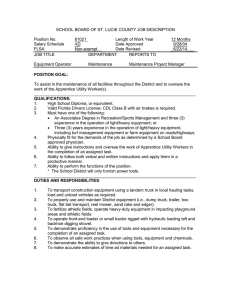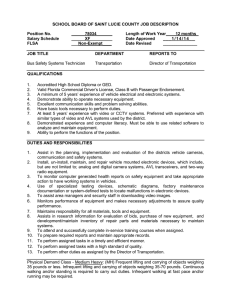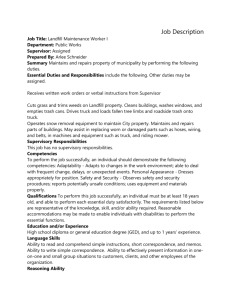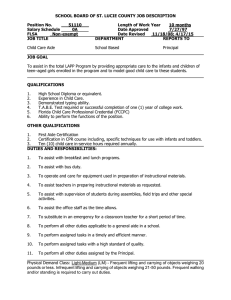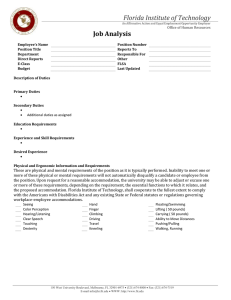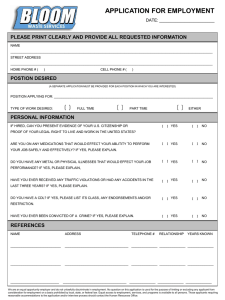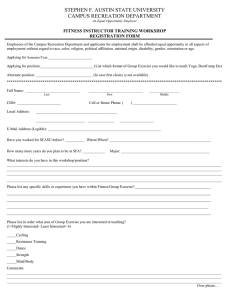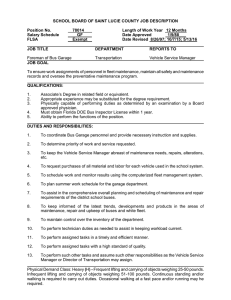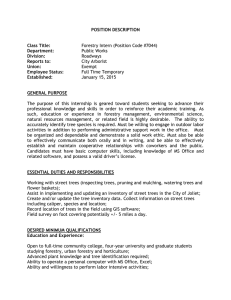GUIDELINES FOR WRITING/REVIEWING POSITION DESCRIPTIONS A position description is a document that concisely identifies a ...
advertisement
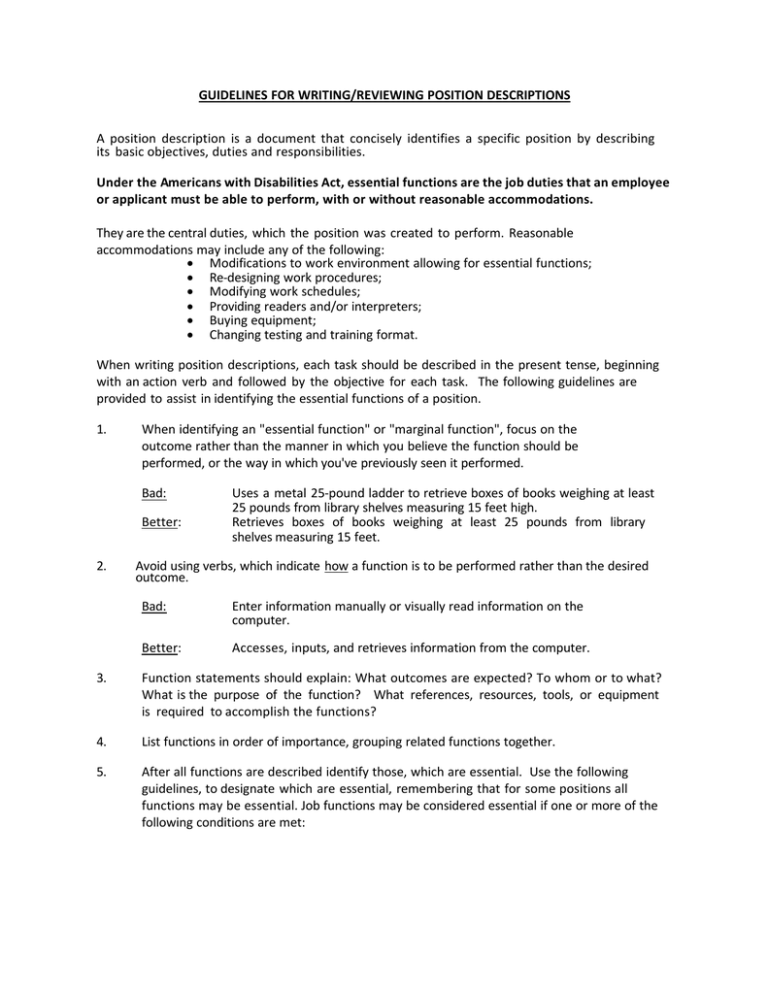
GUIDELINES FOR WRITING/REVIEWING POSITION DESCRIPTIONS A position description is a document that concisely identifies a specific position by describing its basic objectives, duties and responsibilities. Under the Americans with Disabilities Act, essential functions are the job duties that an employee or applicant must be able to perform, with or without reasonable accommodations. They are the central duties, which the position was created to perform. Reasonable accommodations may include any of the following: • Modifications to work environment allowing for essential functions; • Re‐designing work procedures; • Modifying work schedules; • Providing readers and/or interpreters; • Buying equipment; • Changing testing and training format. When writing position descriptions, each task should be described in the present tense, beginning with an action verb and followed by the objective for each task. The following guidelines are provided to assist in identifying the essential functions of a position. 1. When identifying an "essential function" or "marginal function", focus on the outcome rather than the manner in which you believe the function should be performed, or the way in which you've previously seen it performed. Bad: Better: 2. Uses a metal 25‐pound ladder to retrieve boxes of books weighing at least 25 pounds from library shelves measuring 15 feet high. Retrieves boxes of books weighing at least 25 pounds from library shelves measuring 15 feet. Avoid using verbs, which indicate how a function is to be performed rather than the desired outcome. Bad: Better: Enter information manually or visually read information on the computer. Accesses, inputs, and retrieves information from the computer. 3. Function statements should explain: What outcomes are expected? To whom or to what? What is the purpose of the function? What references, resources, tools, or equipment is required to accomplish the functions? 4. List functions in order of importance, grouping related functions together. 5. After all functions are described identify those, which are essential. Use the following guidelines, to designate which are essential, remembering that for some positions all functions may be essential. Job functions may be considered essential if one or more of the following conditions are met: i. ii. iii. iv. v. vi. The reason that the position exists is to perform the function. There are a limited number of employees who can perform the function. The function is so specialized that the person is hired for his/her ability to perform the function. The employer's judgment will be considered as evidence in determining whether a function is essential. For example, an employer's standard requiring computer skills will not be second guessed by EEOC, but the employer must be prepared to demonstrate that such standard is related to the essential functions of the position and that other employees in positions with the same standard are held to that level of performance, if a person with a disability is disqualified as a result of such standard. The percentage of time spent performing the function should be included for each function as this can be determinative that the function is essential. For example, if an employee spends most of the time operating a truck, this would be evidence that driving the truck is a major function of the position. The consequences of not requiring that the function be performed should be considered in determining whether the task is essential. For example, although an airplane pilot spends only a few minutes of flight landing the plane, the consequences of this function not being performed are very serious. QUESTIONS TO CONSIDER IN DETERMINING ESSENTIAL FUNCTIONS 1. Does this task require specialized training? 2. What would be the outcome in the performance of this job if this function is not done by the incumbent? Example: Can somebody else do it? a. b. How many other employees are available to perform this function? Can this function be done in another way? (Please consider the attached guidelines) c. What would be the effect if we were required to do this function in another way as identify in 2b? (i.e. purchase additional equipment, hire another individual, such as a reader, etc.) 3. Do other employees in the same department perform this function? 4. Did the previous employee in this position perform this function? 5. How frequently is this function performed? Daily For how long? Weekly For how long? Monthly For how long? Other 6. What are the physical requirements for this function? 7. What are the mental requirements for this function?
